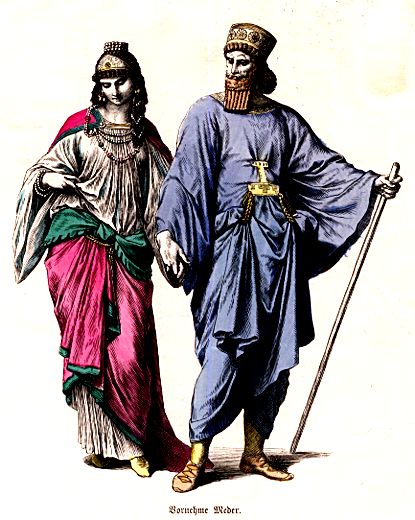Difference between revisions of "Garb"
| Line 1: | Line 1: | ||
N. ''Garb is the costume that players wear.'' | N. ''Garb is the costume that players wear.'' | ||
| − | [[Image:Garb Malfunction.jpg|frame|'Garb malfunctions' are bad.]] | + | |
| + | Clothing (also called clothes, accoutrements, accouterments, or habiliments) protects the human body from extreme weather and other features of the environment. It is worn for safety, comfort, modesty and to reflect religious, cultural and social meaning. | ||
| + | The practical function of clothing is to protect the human body from dangers in the environment: weather (strong sunlight, extreme heat or cold, and precipitation, for example), insects, noxious chemicals, weapons, and contact with abrasive substances, and other hazards. Clothing can protect against many things that might injure the naked human body. In some cases, clothing protects the environment from the clothing wearer as well (example: medical scrubs).[[Image:Garb Malfunction.jpg|frame|'Garb malfunctions' are bad.]] | ||
| + | |||
| + | According to archaeologists and anthropologists, the earliest clothing probably consisted of fur, leather, leaves or grass, draped, wrapped or tied about the body for protection from the elements. Knowledge of such clothing remains inferential, since clothing materials deteriorate quickly compared to stone, bone, shell and metal artifacts. Archeologists have identified very early sewing needles of bone and ivory from about 30,000 BC, found near Kostenki, Russia in 1988. | ||
| + | |||
| + | In many societies, people of high rank reserve special items of clothing or decoration for themselves as symbols of their social status. In ancient times, only Roman senators were permitted wear garments dyed with Tyrian purple; only high-ranking Hawaiian chiefs wore feather cloaks and palaoa or carved whale teeth. Under the Travancore kingdom of Kerala (India), lower caste women had to pay a tax for the right to cover their upper body. In China before the establishment of the republic, only the emperor could wear yellow. In many cases throughout history, there have been elaborate systems of sumptuary laws regulating who could wear what. In other societies (including most modern societies) no laws prohibit lower-status people wearing high status garments, but the high cost of status garments effectively limits their purchase and display. In current Western society, only the rich can afford haute couture. The threat of social ostracism may also limit garment choice. If one is not wearing a specific brand or style of clothing one's social status may fall. [http://en.wikipedia.org/wiki/History_of_clothing 1] | ||
| + | |||
| + | |||
===From the [[7.2]] [[Rulebook]] Section. [[Battlegame]]=== | ===From the [[7.2]] [[Rulebook]] Section. [[Battlegame]]=== | ||
''Here follows some restrictions and guildlines for garb taken directly from the rulebook'' | ''Here follows some restrictions and guildlines for garb taken directly from the rulebook'' | ||
| Line 24: | Line 32: | ||
*[[Tunic]] | *[[Tunic]] | ||
*[[Tabard]] | *[[Tabard]] | ||
| − | *[[ | + | *[[Shirts]] |
| + | *[[Pants]] | ||
*[[Footwear]]-not to be confused with [[Boots]]. | *[[Footwear]]-not to be confused with [[Boots]]. | ||
*[[Cloak]] | *[[Cloak]] | ||
*[[Sash]] | *[[Sash]] | ||
*[[Favors]] | *[[Favors]] | ||
| − | |||
*[[Tights]] | *[[Tights]] | ||
*[[Hoods]] | *[[Hoods]] | ||
Revision as of 07:06, 5 November 2008
N. Garb is the costume that players wear.
Clothing (also called clothes, accoutrements, accouterments, or habiliments) protects the human body from extreme weather and other features of the environment. It is worn for safety, comfort, modesty and to reflect religious, cultural and social meaning.
The practical function of clothing is to protect the human body from dangers in the environment: weather (strong sunlight, extreme heat or cold, and precipitation, for example), insects, noxious chemicals, weapons, and contact with abrasive substances, and other hazards. Clothing can protect against many things that might injure the naked human body. In some cases, clothing protects the environment from the clothing wearer as well (example: medical scrubs).
According to archaeologists and anthropologists, the earliest clothing probably consisted of fur, leather, leaves or grass, draped, wrapped or tied about the body for protection from the elements. Knowledge of such clothing remains inferential, since clothing materials deteriorate quickly compared to stone, bone, shell and metal artifacts. Archeologists have identified very early sewing needles of bone and ivory from about 30,000 BC, found near Kostenki, Russia in 1988.
In many societies, people of high rank reserve special items of clothing or decoration for themselves as symbols of their social status. In ancient times, only Roman senators were permitted wear garments dyed with Tyrian purple; only high-ranking Hawaiian chiefs wore feather cloaks and palaoa or carved whale teeth. Under the Travancore kingdom of Kerala (India), lower caste women had to pay a tax for the right to cover their upper body. In China before the establishment of the republic, only the emperor could wear yellow. In many cases throughout history, there have been elaborate systems of sumptuary laws regulating who could wear what. In other societies (including most modern societies) no laws prohibit lower-status people wearing high status garments, but the high cost of status garments effectively limits their purchase and display. In current Western society, only the rich can afford haute couture. The threat of social ostracism may also limit garment choice. If one is not wearing a specific brand or style of clothing one's social status may fall. 1
From the 7.2 Rulebook Section. Battlegame
Here follows some restrictions and guildlines for garb taken directly from the rulebook
Each class has its own particular garb parameters. In addition, there are certain other garb elements that denote special positions. Note that all battlefield participants must be in “period” garb (tunic, robe, Armor, etc.):
- White belts (any belt more than 25% white), unadorned chains, and spurs are reserved for knights and may not be worn by others.A knight may also choose to trim a knight's white belt with a color particular to that order of knighthood: Gold for Knight of the Crown, Silver for Knight of the Sword, Red for Knight of the Flame, and Green for Knight of the Serpent.
- Red belts (any belt more than 50% red) are generally only worn by squires.
- Black belts with silver trim are generally only worn by men-at arms.
- The Phoenix is the symbol of Amtgard. White and Black Phoenixes are reserved for knights. Gold Phoenix on red background is reserved for Warlord. Otherwise, the phoenix is generally only worn as part of kingdom heraldry.
- A diagonal slash of a guild’s distinct color, worn on a belt, baldric or tunic, is the mark of a class master.
- Guildmasters are entitled to wear favors marked with the symbol of their guild.
- The use of crowns and coronets is reserved for royalty and Noble, although their retainers may wear the symbol of a crown on their garb.
- Most companies and many individuals choose to register their personal symbols and colors. While not specifically disallowed, it is considered bad form to use another’s coat of arms without his agreement. Personal symbols and colors should be registered with the Guildmaster of Heraldry and the Prime Minister.
- Single color belt favors are indicative of a fighter’s relative standing within the fraternity of Order of the Warrior.
- The garb of a page is a yellow belt (not a sash as per wizard) and is generally not worn by others. A non-fighting page must also wear a gold “enchantment” strip if on the field.
- The use and application of good garb is important in creating the correct mood of the Amtgard battlegames and events. All members must be garbed in a “period” fashion. Newcomers should have their own garb (and weapons) within a month of having first attended Amtgard. It is easy and inexpensive to fashion a T-tunic or Tabard, and plenty of people are willing to help. If you have questions about garb or any area of the rules, then all you have to do is ask.
- For the purpose of determining what class people are playing, class sashes must run diagonally across the chest from one shoulder to the opposite hip. They must be at least two inches wide. You may not wear sashes for Class you are not currently playing. Paladin and Anti-Paladin symbols must be at least 5 inches by 5 inches.
Types of garb
See these entries for tutorials and examples Also see Fighting Garb and Court Garb

